To improve my knowledge of imaging and get some experience working with the topics, I decided to create a license plate recognition algorithm on the Android platform.
The first step is detection, for which I decided to implement a recent paper titled "A Robust and Efficient Approach to License Plate Detection". The paper presents their idea very well and uses quite simple techniques to achieve detection. Besides some details lacking in the paper, I implemented the bilinear downsampling, converting to gray scale, and the edging + adaptive thresholding as described in Section 3A, 3B.1, and 3B.2. Unfortunately, I am not getting the output this paper presents in e.g. figure 3 and 6.
The image I use for testing is as follows:
The gray scale (and downsampled) version looks fine (see the bottom of this post for the actual implementation), I used a well-known combination of the RGB components to produce it (paper does not mention how, so I took a guess).
Next is the initial edge detection using the Sobel filter outlined. This produces an image similar to the ones presented in figure 6 of the paper.
And finally, the remove the "weak edges" they apply adaptive thresholding using a 20x20 window. Here is where things go wrong.
As you can see, it does not function properly, even though I am using their stated parameter values. Additionally I have tried:
- Changing the beta parameter.
- Use a 2d int array instead of Bitmap objects to simplify creating the integral image.
- Try a higher Gamma parameter so the initial edge detection allows more "edges".
- Change the window to e.g. 10x10.
Yet none of the changes made an improvement; it keeps producing images as the one above. My question is: what am I doing different than what is outlined in the paper? and how can I get the desired output?
Code
The (cleaned) code I use:
public int[][] toGrayscale(Bitmap bmpOriginal) {
int width = bmpOriginal.getWidth();
int height = bmpOriginal.getHeight();
// color information
int A, R, G, B;
int pixel;
int[][] greys = new int[width][height];
// scan through all pixels
for (int x = 0; x < width; ++x) {
for (int y = 0; y < height; ++y) {
// get pixel color
pixel = bmpOriginal.getPixel(x, y);
R = Color.red(pixel);
G = Color.green(pixel);
B = Color.blue(pixel);
int gray = (int) (0.2989 * R + 0.5870 * G + 0.1140 * B);
greys[x][y] = gray;
}
}
return greys;
}
The code for edge detection:
private int[][] detectEges(int[][] detectionBitmap) {
int width = detectionBitmap.length;
int height = detectionBitmap[0].length;
int[][] edges = new int[width][height];
// Loop over all pixels in the bitmap
int c1 = 0;
int c2 = 0;
for (int y = 0; y < height; y++) {
for (int x = 2; x < width -2; x++) {
// Calculate d0 for each pixel
int p0 = detectionBitmap[x][y];
int p1 = detectionBitmap[x-1][y];
int p2 = detectionBitmap[x+1][y];
int p3 = detectionBitmap[x-2][y];
int p4 = detectionBitmap[x+2][y];
int d0 = Math.abs(p1 + p2 - 2*p0) + Math.abs(p3 + p4 - 2*p0);
if(d0 >= Gamma) {
c1++;
edges[x][y] = Gamma;
} else {
c2++;
edges[x][y] = d0;
}
}
}
return edges;
}
The code for adaptive thresholding. The SAT implementation is taken from here:
private int[][] AdaptiveThreshold(int[][] detectionBitmap) {
// Create the integral image
processSummedAreaTable(detectionBitmap);
int width = detectionBitmap.length;
int height = detectionBitmap[0].length;
int[][] binaryImage = new int[width][height];
int white = 0;
int black = 0;
int h_w = 20; // The window size
int half = h_w/2;
// Loop over all pixels in the bitmap
for (int y = half; y < height - half; y++) {
for (int x = half; x < width - half; x++) {
// Calculate d0 for each pixel
int sum = 0;
for(int k = -half; k < half - 1; k++) {
for (int j = -half; j < half - 1; j++) {
sum += detectionBitmap[x + k][y + j];
}
}
if(detectionBitmap[x][y] >= (sum / (h_w * h_w)) * Beta) {
binaryImage[x][y] = 255;
white++;
} else {
binaryImage[x][y] = 0;
black++;
}
}
}
return binaryImage;
}
/**
* Process given matrix into its summed area table (in-place)
* O(MN) time, O(1) space
* @param matrix source matrix
*/
private void processSummedAreaTable(int[][] matrix) {
int rowSize = matrix.length;
int colSize = matrix[0].length;
for (int i=0; i<rowSize; i++) {
for (int j=0; j<colSize; j++) {
matrix[i][j] = getVal(i, j, matrix);
}
}
}
/**
* Helper method for processSummedAreaTable
* @param row current row number
* @param col current column number
* @param matrix source matrix
* @return sub-matrix sum
*/
private int getVal (int row, int col, int[][] matrix) {
int leftSum; // sub matrix sum of left matrix
int topSum; // sub matrix sum of top matrix
int topLeftSum; // sub matrix sum of top left matrix
int curr = matrix[row][col]; // current cell value
/* top left value is itself */
if (row == 0 && col == 0) {
return curr;
}
/* top row */
else if (row == 0) {
leftSum = matrix[row][col - 1];
return curr + leftSum;
}
/* left-most column */
if (col == 0) {
topSum = matrix[row - 1][col];
return curr + topSum;
}
else {
leftSum = matrix[row][col - 1];
topSum = matrix[row - 1][col];
topLeftSum = matrix[row - 1][col - 1]; // overlap between leftSum and topSum
return curr + leftSum + topSum - topLeftSum;
}
}




